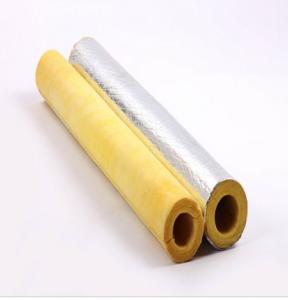Hanging Flexible Duct: Techniques and Tips
Flexible ducts, also known as flex ducts, are a popular choice for heating, ventilation, and air conditioning (HVAC) systems. They are easy to install, cost-effective, and can be maneuvered around tight spaces. However, hanging these ducts can sometimes be a challenge, especially for those who are new to the task. In this article, we will explore various techniques and tips to help you hang flexible ducts with ease and confidence.
Understanding Flexible Ducts
Before we dive into the techniques, it’s essential to understand what flexible ducts are and how they work. Flexible ducts are made from a flexible material, usually a composite of metal and plastic, which allows them to bend and twist to fit into various spaces. They are designed to connect the HVAC system to the air vents in your home or office.
Why Choose Flexible Ducts?
There are several reasons why flexible ducts are a popular choice for HVAC systems:
1. Ease of Installation: They can be easily maneuvered around obstacles and through tight spaces, making the installation process less cumbersome.
2. Cost-Effectiveness: Compared to rigid ducts, flexible ducts are generally more affordable, which is a significant advantage for those on a budget.
3. Energy Efficiency: They help in maintaining a consistent airflow, which contributes to the overall energy efficiency of the HVAC system.
4. Customizability: Flexible ducts can be cut and customized to fit specific needs, making them suitable for various applications.
Preparing for the Installation
Before you start hanging the flexible ducts, there are a few preparations you need to make:
1. Gather the Necessary Tools: You will need a measuring tape, a utility knife, a duct cutter, a marker, and possibly a helper to hold the duct in place.
2. Measure the Duct Runs: Accurate measurements are crucial to ensure a proper fit. Measure the distance from the HVAC unit to the air vents, taking into account any turns or bends.
3. Plan the Route: Plan the route the duct will take, considering the shortest and most efficient path while avoiding any potential obstacles.
4. Check for Obstructions: Ensure that there are no obstructions in the path of the duct, such as electrical wires or plumbing pipes.
Techniques for Hanging Flexible Ducts
Now that you’re prepared, let’s look at some techniques to help you hang the flexible ducts effectively:
1. Cutting the Duct: Use a duct cutter to make clean, straight cuts. Avoid using a regular knife, as it may damage the duct material.
2. Connecting the Ducts: Use duct connectors or duct tape to join multiple sections of the duct together. Ensure the connections are secure and airtight.
3. Securing the Duct: Use duct hangers or straps to secure the duct to the ceiling or walls. Space the hangers evenly along the duct to maintain its shape and prevent sagging.
4. Handling Bends and Turns: When dealing with bends and turns, use duct fittings designed for these purposes. These fittings help maintain the airflow and reduce resistance.
5. Insulating the Duct: Insulate the duct to prevent heat loss or gain, especially in areas with extreme temperature fluctuations.
6. Testing the System: After the installation is complete, test the HVAC system to ensure there are no leaks and that the airflow is consistent.
Tips for a Successful Installation
Here are some additional tips to ensure a successful installation:
1. Take Your Time: Don’t rush the process. Take your time to measure accurately and secure the duct properly.
2. Use the Right Tools: Using the right tools for the job will make the installation process smoother and more efficient.
3. Ask for Help: Don’t hesitate to ask for help if needed. Hanging ducts can be a two-person job, especially in tight spaces.
4. Inspect Regularly: Regular inspection and maintenance of the ducts will help prolong their lifespan and ensure optimal performance.
5. Follow the Manual: Always follow the manufacturer’s instructions for the specific type of flexible duct you are using.
6. Stay Informed: Keep yourself updated on the latest techniques and best practices for hanging flexible ducts.
Common Challenges and How to Overcome Them
While hanging flexible ducts can be relatively straightforward, you may encounter some challenges:
1. Sagging Ducts: If the ducts sag, it’s a sign that they are not adequately supported. Add more hangers or use stronger hangers to provide better support.
2. Leakage: If there’s leakage, check the connections and seal them properly. Use a high-quality duct tape or mastic sealant to ensure an airtight seal.
3. Noise Issues: If the system is noisy, it could be due to poor installation or damaged ducts. Inspect the ducts for damage and ensure they are properly secured.
4. Improper Fit: If the ducts do not fit as expected, double-check your measurements and make necessary adjustments.
5. Airflow Issues: If the airflow is not consistent, inspect the ducts for blockages or kinks and correct them as needed.
The Importance of Proper Duct Installation
Proper installation of flexible ducts is crucial for the performance of your HVAC system. It ensures efficient airflow, minimizes energy waste, and contributes to a comfortable indoor environment. By following the techniques and tips outlined in this article, you can achieve a successful installation and enjoy the benefits of a well-functioning HVAC system.
Final Thoughts
Hanging flexible ducts may seem daunting at first, but with the right knowledge, tools, and approach, it can be a manageable task. Remember to take your time, use the appropriate tools, and don’t be afraid to ask for help if needed. By doing so, you’ll ensure a successful installation and a comfortable living or working space. So, roll up your sleeves, and let’s get to work on that HVAC system!

